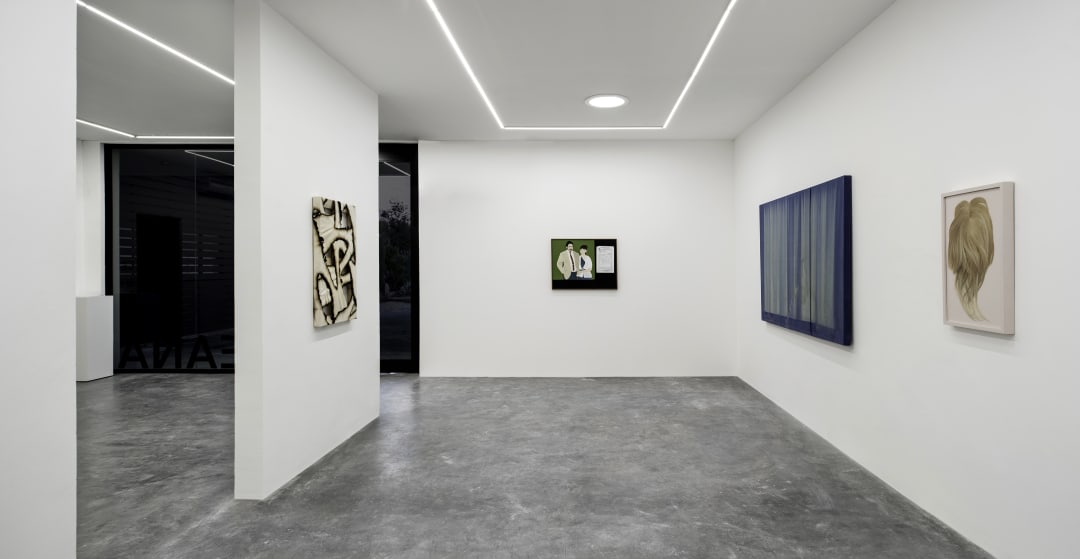In 1981, an exhibition titled A New Spirit in Painting was presented at the Royal Academy in London. It sought to revalue the role of painting in an era where the focus of attention was more practical, linked to postmodern movements such as conceptual art, installation, performance, and video art.
Under the premise that pictorial production had been left in the shadow of those new practices, and that it deserved to be recognized, Rosenthal, Serota, and Joachimides, curators of the exhibition, selected the work of 38 artists, among whom were Francis Bacon, Matta, Balthus, Willem de Kooning, Lucian Freud, Andy Warhol, Cy Twombly and Frank Stella. This exhibition, in essence, was an early response to the new artistic currents that were emerging in painting and sculpture, and widely expressed the feeling that there was a return to these expressions. It is under this context that Spirit Painting is born. Spirit Painting is composed of different approaches to contemporary painting from the perspective of thirteen artists: Nina Beier, José León Cerrillo, Simon Fujiwara, Nathan Hylden, Christian Jankowski, Marie Lund, Benoît Maire, Elsa-Louise Manceaux, Diego Salvador Rios, Eduardo Sarabia, Alejandro Romero, Sangree and Ariel
Schlesinger, with the aim of rethinking painting and visualizing the paths towards which it is directed.
This exhibition does not intend to distance the pictorial exercise from the conceptual but seeks to highlight convergences between painting and riskier artistic practices, such as experimentation with materials, the use of alternative processes and the creation of conceptual discourses.
For Curtain Bang Champagne Glam, Nina Beier, cut, styled and dyed a human hair wig before flattening it and framing it in a pink box – decontextualizing the human element, to affect our experience with a new mode of representation. Simon Fujiwara presents Masks (Merkel B.18,1), a piece that is part of a series of paintings that together form a large-format portrait of Angela Merkel's face. The artist takes refuge in the apparent innocence of his materials to approach one of the most powerful women in the world and make us think about power and invisibility.
Christian Jankowski’s unconventional working method involves surprising forms of collaboration with people outside the art world, for Chinese Whispers – Neue Malerei (Van Gogh I-X) the artist found photos on the internet of people reenacting a Van Gogh portrait, sending them to China to be painted by an artist there. In this process, Van Gogh’s work is reproduced in different media, undergoing a diverse series of transformations: from the original to a re-enactment to a photograph to mass media and back to an oil painting. In contrast, Diego Salvador Ríos adheres to a very personal discourse, Retrato de mis padres (parasiempre) [Portrait of My Parents (forever)], based on a collection of memories of his family, showing an oil portrait of his parents in
the left and his own birth certificate to the right.
Elsa-Louise Manceaux in PERSONA (2), explores mental landscapes, internal worlds, and intangible situations. Thus, through the use of lines and circular compositions creates abstract profiles that mix the imaginary with an aesthetic formality. Besides, Benoit Maire presents a piece from his series Cloud Paintings, where he explores different representations of the clouds through a multiplicity of shapes and colors that
oscillate between figuration and abstraction. Moreover, Stills captures the moment between past and present, stillness and motion, disappearance and resistance – where artist Marie Lund questions the border territory where one object is constantly defined by its relation to another In Subtracted Poem (against an analytic hypothesis) from simple geometrical systems, José León Cerrillo creates a meaningless juxtaposition of shapes and symbols, suggesting the failure of modernism and highlighting its status as a purely formal language. Furthermore, Nathan Hylden creates an abstract landscape
that results in a painting with a subtle balance between color and form, rationality and spontaneity, and time and spatiality. Ariel Schlesinger through his intelligent alterations, sometimes kinetic, puts us in front of a perfectly conceived canvas that, nevertheless, is the product of having been burned with a lighter, which shows a duality between destruction and creation. 2 of 909,171,781,056,000 September by Alejandro Romero is part of a pictorial exercise, titled Trillion of Paintings, in which the artist conceives a reflection from the formality of mathematics to create a poetic discourse on infinite possibilities.
Under a conceptual language, Eduardo Sarabia presents Money Changes Everything, a piece approaching a critique on materialism and class struggles. In this way, Sarabia uses a traditional element, ceramics, to engage in socio-economic issues. Finally, Chichis [Breasts] is part of a series of paintings based on Sangree's drawing archive, which is a fundamental support of his creative and conceptual practice. The images want to represent certain archetypes in a timeless and contemporary language at the same time.
In this way, Spirit Painting gives us a glimpse of how painting pursues unusual paths, using new methods, materials, and discourses. With this, the painting as an artistic expression resists and adapts to contemporaneity to claim its place within the current art scene.
